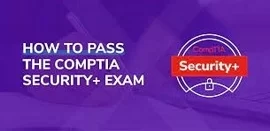India and Bangladesh are exploring the possibility of doing away with the US dollar as the official currency for payments between the two countries. This move could lead to lower trade costs and conversion rate losses for businesses and individuals in both nations. Let’s explore the India-Bangladesh de-dollarization initiative.
Current Transaction System
Currently, official transactions between India and Bangladesh are conducted in US dollars, which are then converted to the Indian rupee or the Bangladeshi taka. This results in conversion losses for both sides, making trade between the two countries more expensive. For instance, a Bangladeshi credit cardholder making purchases in India ends up paying more than the actual rupee-taka exchange rate due to the two-time dollar conversion for a single transaction. The same is true for businesses when they import goods and services from India.
The Initiative
During a recent cabinet meeting, Bangladesh’s Ministry of Commerce submitted a written recommendation regarding the feasibility and potential benefits of using rupees instead of dollars. After that Bangladesh Bank conducted a trial.
An executive director of Bangladesh Bank informed UNB that the use of rupees will commence with Bangladesh’s $2 billion trade with India. The implementation of trading in rupees will be subject to a bilateral decision on certain issues before both countries can begin using the currency for trade, he added.
Earlier, Bangladesh Bank Governor Abdur Rouf Talukder and Reserve Bank of India Governor Shaktikanta Das discussed the possibility of having such an arrangement. The discussion took place on the sidelines of the G20 Finance Ministers and Central Bank Governors meeting held in Bengaluru on February 24-25, 2023. The initiative aims to introduce a dual currency card for Bangladeshis visiting India and vice versa. The exchange rate for the card would be derived from the two currencies and not work backward from the exchange rate of the dollar.
India proposed to introduce the rupee as a medium of trade between Bangladesh and India at the Bangladesh-India ministerial meeting on trade, held in New Delhi on December 22-23, 2022.
Benefits
For Indian businesses, this arrangement would mean that they would get their bills faster as there will be no involvement of dollars. For Bangladesh, it would reduce the pressure on foreign currency reserves due to the large volume of payments to India, as highlighted by Governor Talukder during the National Economic Council meeting chaired by Prime Minister Sheikh Hasina.
Meanwhile, the India-Bangladesh Chamber of Commerce and Industry has submitted a proposal to the central bank containing the total trade account. It will help understand the scope of Bangladesh-India trade in rupees.
India is presently trading in rupees with Russia, Mauritius, Iran, and Sri Lanka.
Modalities of India Bangladesh De-dollarization initiative
Reserve Bank of India Governor Shaktikanta Das is on board with the initiative, and the two central banks are working on the modalities. The initiative would first run on a test basis. However, businesses would have to wait to pay their bills in rupees as it would require the cooperation of private banks. The governor plans to sit with the banks soon to discuss this issue.
According to Bangladesh Bank spokesperson Md Mezbaul Haque, the use of the rupee instead of the US dollar for India-Bangladesh trade is still in the experimental stage, with certain bilateral issues requiring resolution. The banks also need to prepare for this transition. However, he expects a positive decision in due course.
Mezbaul clarified that there will not be a fixed annual dollar quota for opening LCs, and that LCs will be opened based on the needs of the businessmen involved. However, he noted that the only source of rupees is from the export earnings of Bangladeshi goods in India. Due to the trade deficit resulting from the higher import volume from India, the amount of rupee available for trade is a major point of consideration regarding Bangladesh-India trade in rupees.
The India-Bangladesh de-dollarization initiative could lead to lower trade costs and conversion rate losses for businesses and individuals in both countries. The use of a dual currency card for transactions between the two nations would reduce the pressure on foreign currency reserves and make trade between the two nations more accessible. While the initiative is still in the planning stage, it shows the willingness of the two nations to improve their trade relationship and reduce their reliance on the US dollar.








